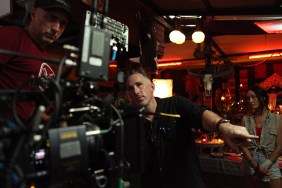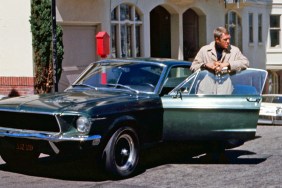
Part one of our series of interviews with horror filmmaker Gary A. Sherman.
Since its formative years of 1930s Universal Studios monster flicks, 1950s giant radioactive creature features and George A. Romeros genre-defying seminal zombie opus, NIGHT OF THE LIVING DEAD, horror has always been founded on the sociopolitical issues that pervade the societal landscape of an era.
Under-recognized genre auteur Gary A. Sherman is no stranger to the reality-based scares and political rhetoric that exist within the hypo-dermal layers of horror. Since his 1972 theatrical directorial debut, DEATH LINE (AKA RAW MEAT), Sherman has utilized his own personal brand of fright-filmmaking as a vehicle for expression of his political perspectives, and acknowledgement and advocacy of basic human rights. His feature films are ripe with timeless socio-political urgency.
DEATH LINE is an inverted depiction of class differences in Englandthe poor literally feeding off of the rich in an effort to survive the dire circumstances of their impoverished existence. DEAD AND BURIED can be interpreted as a commentary on small town living and the alienation its native inhabitants experience in when invaded by tourists and big-city dwellers, as well as the primal human fear of death and our survivalist desire to evade it as long as possible. VICE SQUAD is an expose on Hollywoods gritty, sinister nightlife and the exploitation of sex trade workers, and the involvement of Los Angeles Vice Squad police force. WANTED: DEAD OR ALIVE explores issues of vigilante justice and terrorism. LISA is a sort of coming-of-age tale about an adolescent girl and her blossoming sexuality, and public concern regarding pedophiles and sexual offenders. But perhaps of greatest curiosity is Shermans final theatrical feature: 39: A FILM BY CARROLL McKANE , which examines the prevalence of narcissistic behavior in the current era of pervasive technological advancements, and the detriment that compulsive use of media poses to the moral structure of society.
SHOCK is proud to be running this mini-series of conversations with Sherman about his key films. We’ll start with DEATH LINE.
Mind the doors!

DEATH LINE
SHOCK: Your feature directorial debut took place in 1973 with the subway-station cannibal mystery, DEATH LINE. Can you take a moment to reflect on that inaugural experience?
GARY A. SHERMAN: I was very political at the time and I kept writing these very political scriptsIm still political, actuallybut nobody took them seriously. They were student film kind of scripts. Somebody said to me, write a horror film and youll get a lead. I had a fairly successful commercial career going at the time. So I came up with the idea for this story and I sat down with a friend of mine, who was an advertising agency writer and producer, and I was doing a big commercial campaign with. He had just written a novel, and I said, you know, I have this idea for a movie, and while we were on location shooting for some commercials, Ceri Jones and I wrote DEATH LINE together. The whole idea of DEATH LINE was to kind of highlight class distinctions in England more than to make a scary movie, and I just kind of wrapped my political treatise of the class distinctions in England in this movie. I understood the British culture and I really was pointing a finger at British classicism, which to me is what DEATH LINE is all about.
SHOCK: One of the main locations of DEATH LINE was the unfinished underground railway station in London called the Museum, which added a genuinely frightening ambiance to the film. What was it like to film there and did you experience any real scares during production?
SHERMAN: It was really strange being down there. We shot in a part of the original unfinished underground that had been used to store munitions during World War II, and in these tunnels that had actually been dug before World War I. So they were in pretty bad shape. This was 1972 when we were shooting down there and you could still see the damage from the bombing during the Second World War, and the place was filled with rats! There were rats down there by the millions. One of the things that we were worried about was we had our kind of clean, trained rats that we were using and we were trying to keep our rats from getting away and getting mixed with the wild rats that were down there. There were a lot of people in these tunnelsyou know, homeless people; and so we actually did find other places for them to stay while we were filming, and kind of took care of them. Then we got into the areas that they actually lived in, which we used for locations. We walked into one space and there were like dozens of dead rats hanging from strings tied around their tails. Some of the homeless people had this thing with collecting dead rats and just basically using them as decoration. I dont know if they were taught that the dead rats would scare off the live ones, but it was kind of gruesome. It always felt like that old place was going to cave in on us at any minute. So it was creepy, I dont know if it was scary but those tunnels were really creepy and damp and cold, and you just felt so filthy by the time we finished work everyday. The smell when we first went in there was absolutely putrid, and we sent a team in to spray everything down with disinfectant, and that made it smell even worse, although we did feel a lot safer. I dont think any of us wanted to walk out of there having re-discovered Bubonic Plague.

SHOCK: Donald Pleasence was cast in the main role as Inspector Calhoun. How did he come to fill those shoes?
SHERMAN: When I wrote the script with Ceri, I had always pictured Donald Pleasence as the inspector. He was one of my favorite actors and I just thought it would really be amazing to direct Donald; it was a thrill of a lifetime for me to direct him. Donald, at the time, was doing MAN IN THE GLASS BOOTH on Broadway. I flew to New York to bring him the script and to meet with him. He read the script and he loved the character and he said he would do it. That was a time when Donald was like a super star actor, and he was the actors actor. Once Donald agreed to do the movie, other actorsincluding Christopher Leejust flocked around and said, I want to be in this film because I want to play opposite Donald Pleasence. Thats how Norman Rossington came to play Detective Sergeant Rogers, and it was pretty amazing. Clive Swift was doing an Alfred Hitchcock movie at the time and he wanted to be in the film. He was the one that played Inspector Richardson from London Underground. These people were all major British character actors.
SHOCK: With the exception of H.G. Lewis films, visceral, graphic horror was sparse in the early 1970s. Whereas the gory content of Lewis films was presented in a much more slapstick, schlocky sort of way, the gore in Death Line was exhibited in a very primitive fashion, as the aftermath of implied violence with underlying issues of necessity and survival at the heart of it. What sorts of issues did the realistic nature of the gore present upon being the film being rated, released and distributed? Did you experience any backlash from cast and/or crew-members upon shooting those particularly graphic scenes?
SHERMAN: The gruesomeness of DEATH LINE was an absolute necessity for me to bring up the political content of the film. I wanted to show how devastating class distinction could be. It was necessary for me to show that the result of this class distinction could create the kind of mayhem and ugliness that was created in the world of the people who lived underneath the tubes of London. While were shooting, it was ugly and it was horrifying. But the main crewmembers were really dedicated to making this film, and understood the film that we were making; there was no backlash to the gore and violence whatsoever. But there was backlash from the casual people coming on to the set, so we had to change stand-ins a lot. There was one guy who was a stand-in for James Cossins, whos basically lying unconscious most of the time among [the dead bodies], who literally just ran out of there and said, Im not lying in that kind of stuff! This plays smells awful! Im not getting sick! Even though there was really no chance of anybody getting sick because as I said, we had disinfected the place considerably.









